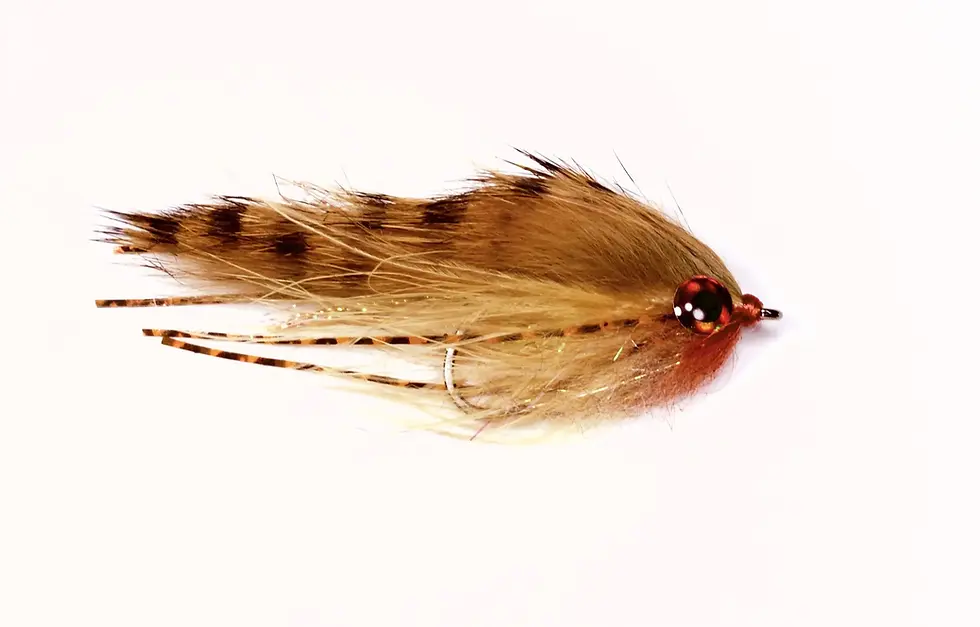Fixing the Gurgler
- dparsons911
- Oct 9, 2024
- 3 min read

The Gurgler was invented by the late fly tier Jack Gartside and is one of those all-around useful patterns than will catch everything from panfish to tarpon. It’s success is almost certainly of the unique “gurgling” style of action that attracts fish and it has quickly become one of the most effect topwater patterns in recent history.
Gartside wrote about his creation:
“First off, the Gurgler—by virtue of its upturned and extended lip—is designed primarily to be a surface “commotion” fly; that is, it attracts fish to it by the commotion or noise it makes while moving across the surface. Once it’s done this job of attracting the fish, the form of the fly then assumes greater importance—the form of a baitfish, frog, worm, grasshopper, or whatever—and convinces the fish that this is worth eating….”
Well. Maybe….
I decided I needed to redesign this fly is because its a POS to cast. Ok, let’s back up a little. The gurgler is one of my all time favorite topwater patterns except for one thing. I hate it. This thing casts like satan’s used underwear. Thats just all there is to it. I had to buy a faster rod, a special line and join a gym just to cast these f’ing things more than 30 feet. Its all because of that rubber looking face it has. It has the aerodynamic ratio of zero. But it has the hydrodynamic ratio of awesome and my biggest largemouth so far on this thing is 7 lbs.
With all that said, gurglers catch a crap ton of fish for me and I cant seem to find a replacement that works as well. So, I’ve looked at this thing hard and I’ve decided its success is all in that foam head. Its the subtle splash action that brings ‘em up from the deep. (Any conventional bass fisherman will tell you the famous Rico’s success is all in the splash.)
So one day after fishing this wonderful wad of foam hell, I was icing down my elbow and decided to fix the gurgler. Other than casting like an distance-destroying, open parachute, line twist was horrendous. So much that after only two or three casts the fly would spin on the water as the line untwisted. I tried about a dozen different modifications, cutting the head back, trimming the sides and lots of different quick and dirty mods and actually cured some of the casting and twist problems. But, the problem was the fishy water spraying action was always compromised.
Then one day digging around the garage I found my engineering degree in a box and decided to take it out and try using it for once. To skip the girl repelling nerd stuff, suffice it to say what I came up with was a surface that allows air to flow through instead of buffeting on the cast, but still catches water enough to still scatter it in the same way. Because water has greater surface tension the added surface area of the foam actually gives it more spray action in the water yet lets the air pass through on the cast with less friction. It has to do with different densities of the fluids and whatnot….I’ll stop. At any rate, the water spray action is actually better than before, the casting distance is actually about double and I don’t have to do extra lifts on my left side at the gym to even out the muscles on my arms. The line twist is also completely gone, which I never really expected to accomplish. And the best part is, if you already have a collection of gurglers in your arsenal, you won’t have to shell out the extra bucks to replace them. You can just modify the ones you have.
Instructions:
Just tie a standard gurgler, but leave the head a little longer than you usually would.
Cut a V-notch on each edge of the head, and one in the center.
Only cut about 50% the way into the head. Any farther and it starts to push less water and loses splash.
The final product looks like a drunken starfish and probably wouldn’t make a magazine cover, but this is about improving performance and if you try this I think you’ll agree its a worthy improvement.












Comments